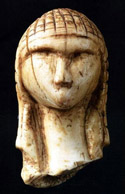Anthropology, Department of

Department of Anthropology: Faculty Publications
Document Type
Article
Date of this Version
11-2-2022
Citation
Thompson AE, Walden JP, Chase ASZ, Hutson SR, Marken DB, Cap B, et al. (2022) Ancient Lowland Maya neighborhoods: Average Nearest Neighbor analysis and kernel density models, environments, and urban scale. PLoS ONE 17(11): e0275916. https://doi.org/10.1371/journal.pone.0275916
Abstract
Many humans live in large, complex political centers, composed of multi-scalar communities including neighborhoods and districts. Both today and in the past, neighborhoods form a fundamental part of cities and are defined by their spatial, architectural, and material elements. Neighborhoods existed in ancient centers of various scales, and multiple methods have been employed to identify ancient neighborhoods in archaeological contexts. However, the use of different methods for neighborhood identification within the same spatiotemporal setting results in challenges for comparisons within and between ancient societies. Here, we focus on using a single method—combining Average Nearest Neighbor (ANN) and Kernel Density (KD) analyses of household groups—to identify potential neighborhoods based on clusters of households at 23 ancient centers across the Maya Lowlands. While a one-size-fits all model does not work for neighborhood identification everywhere, the ANN/KD method provides quantifiable data on the clustering of ancient households, which can be linked to environmental zones and urban scale. We found that centers in river valleys exhibited greater household clustering compared to centers in upland and escarpment environments. Settlement patterns on flat plains were more dispersed, with little discrete spatial clustering of households. Furthermore, we categorized the ancient Maya centers into discrete urban scales, finding that larger centers had greater variation in household spacing compared to medium-sized and smaller centers. Many larger political centers possess heterogeneity in household clustering between their civic-ceremonial cores, immediate hinterlands, and far peripheries. Smaller centers exhibit greater household clustering compared to larger ones. This paper quantitatively assesses household clustering among nearly two dozen centers across the Maya Lowlands, linking environment and urban scale to settlement patterns. The findings are applicable to ancient societies and modern cities alike; understanding how humans form multi-scalar social groupings, such as neighborhoods, is fundamental to human experience and social organization.
Included in
Archaeological Anthropology Commons, Digital Humanities Commons, Geographic Information Sciences Commons, Human Geography Commons, Spatial Science Commons, Urban Studies and Planning Commons


Comments
Copyright: © 2022 Thompson et al. This is an open access article distributed under the terms of the Creative Commons Attribution License,